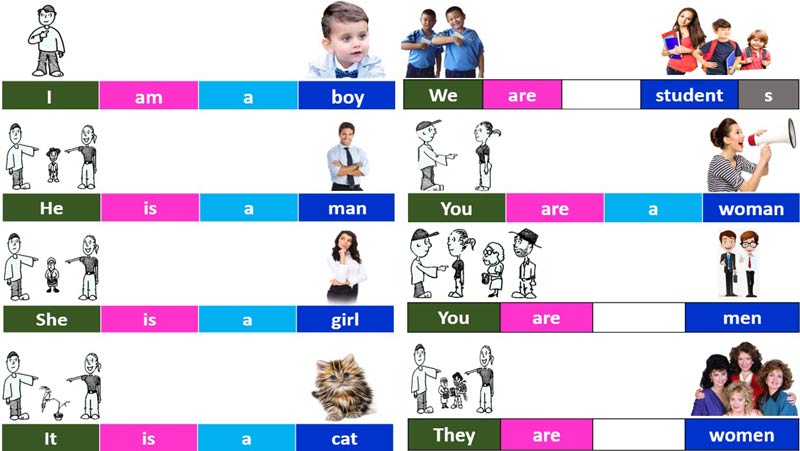Personal Pronouns and the Auxiliary Verb ‘to be’
- April 13, 2023
- Posted by: Teacher Vlad
- Category: English ,

Very often, beginners don’t know where to start learning English. Our teaching experience has shown that the best topic to start learning English is personal pronouns and the auxiliary verb ‘to be’. Personal pronouns and auxiliary verbs are two fundamental components of the English language that play a significant role in constructing sentences.
Personal pronouns are words used to replace or refer to a person or thing, while auxiliary verbs are verbs used to form tenses, voice, mood, and questions. In this blog post, we will explore the use of personal pronouns and the auxiliary verb “to be” in English sentences.
Personal Pronouns
Personal pronouns are categorized into three categories, namely subject pronouns, object pronouns, and possessive pronouns. Subject pronouns are used to replace the subject of a sentence, while object pronouns replace the object of a sentence. Possessive pronouns indicate ownership or possession of an object.
Here are the subject pronouns in English:
- I
- You
- He
- She
- It
- We
- They
In Beautiful English speaking training system, subject pronouns look like this:
Here are the object pronouns in English:
- Me
- You
- Him
- Her
- It
- Us
- Them
In Beautiful English speaking training system, object pronouns look like this:
Here are the possessive pronouns in English:
- My/Mine
- Your/Yours
- His
- Hers
- Its
- Our/Ours
- Their/Theirs
In Beautiful English speaking training system, possessive pronouns look like this:
Personal pronouns are used to replace nouns in sentences to avoid repetition or to make sentences more concise. For example, instead of saying “John went to the store, and John bought some milk,” we can say “John went to the store, and he bought some milk.”
Auxiliary Verb "to be"
The auxiliary verb “to be” is used to form tenses, voice, mood, and questions. It is also used to link the subject of a sentence to its complement, which can be an adjective, noun, or pronoun. “To be” has eight forms: am, is, are, was, were, be, being, and been.
Here are some examples of “to be” used in various tenses:
- Present tense: I am hungry.
- Past tense: She was happy yesterday.
- Future tense: They will be here soon.
- Present perfect tense: We have been to Paris.
- Past perfect tense: He had been working all day.
The verb “to be” is also used in passive voice sentences. For example, instead of saying “John hit the ball,” we can say “The ball was hit by John,” where “was” is the auxiliary verb used to form the passive voice. In questions, the auxiliary verb “to be” is used to invert the subject and verb. For example, instead of saying “You are happy,” we can ask “Are you happy?”
Conclusion
Personal pronouns and the auxiliary verb “to be” are essential components of English sentences. Personal pronouns are used to replace nouns and make sentences more concise, while the auxiliary verb “to be” is used to form tenses, voice, mood, and questions. By mastering the use of personal pronouns and the auxiliary verb “to be,” English learners can construct sentences accurately and effectively. However, all the English learners, especially beginners, should understand that they will not be able to use English grammar elements correctly without enough speaking practice.



